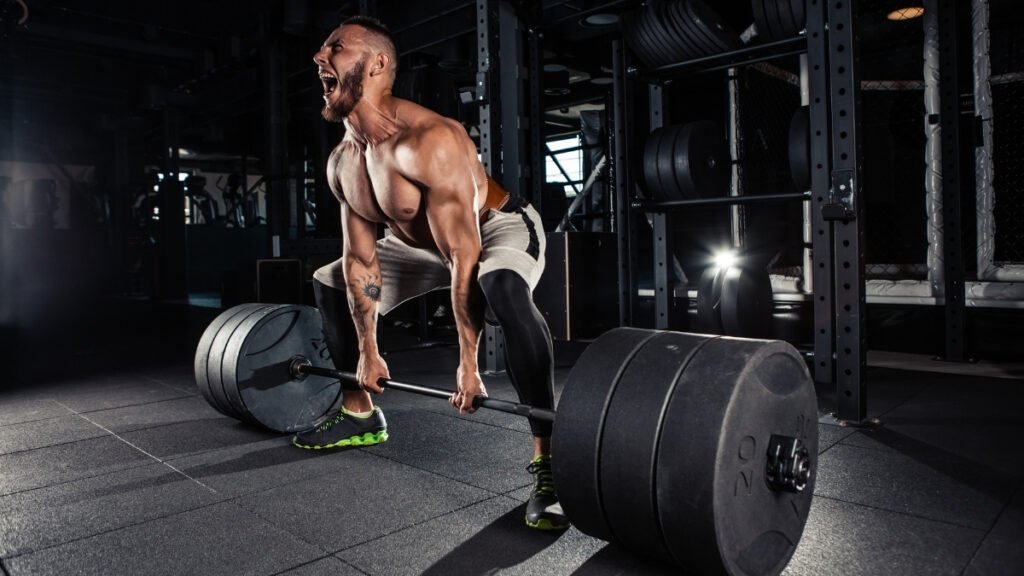
Deadlifts are often regarded as one of the most effective exercises for building full-body strength, power, and muscle mass. This compound movement engages multiple muscle groups and is essential for anyone looking to enhance their fitness levels. This guide will cover essential techniques for proper deadlift form, the numerous benefits of deadlifting, variations to incorporate into your routine, and important safety precautions.
Essential Techniques for Proper Deadlift Form
1. Setup and Stance
- Foot Position: Stand with your mid-foot directly under the barbell. Your feet should be about hip-width apart with toes pointing slightly outward (approximately 15 degrees) to allow for proper knee tracking during the lift.
- Bar Placement: The bar should be positioned over the middle of your feet, approximately at the intersection of your shoelaces.
2. Grip and Body Positioning
- Grip the Bar: Bend at your hips and knees to reach down and grab the bar with a shoulder-width grip. Your arms should hang straight down, with your elbows locked.
- Knee Position: Bend your knees until they touch the bar without allowing the bar to move away from your mid-foot. Your shins should remain vertical.
- Back Alignment: Maintain a neutral spine throughout the lift. Your chest should be up, shoulders back, and head in line with your spine.
3. Lifting Technique
- Engage Your Core: Take a deep breath and brace your core before lifting. This creates intra-abdominal pressure that stabilizes your spine.
- Lift Off: Push through your heels while keeping the bar close to your body. Extend your hips and knees simultaneously; avoid allowing your hips to rise faster than your chest.
- Standing Position: At the top of the lift, stand tall without leaning back excessively. Your hips should be fully extended.
4. Lowering the Weight
- To lower the weight, hinge at your hips first while maintaining a straight back. Bend your knees once the bar passes them, keeping it close to your body until it returns to the floor.
5. Repetition Technique
- Allow a brief pause between repetitions to reset your position. Each rep should start from a dead stop on the floor to ensure proper form and muscle engagement throughout.
Benefits of Deadlifting
Deadlifts offer numerous advantages that extend beyond just building muscle:
- Full-Body Strength: Deadlifts engage major muscle groups including glutes, hamstrings, back (lower back, lats), core, and forearms. This makes them one of the best exercises for developing overall strength34.
- Improved Grip Strength: Holding heavy weights during deadlifts enhances grip strength, which is essential for overall health and functional fitness3.
- Caloric Burn: Deadlifting burns a significant number of calories due to its engagement of large muscle groups. It can also elevate post-exercise oxygen consumption (EPOC), leading to additional calorie burn after workouts3.
- Enhanced Athletic Performance: The strength gained from deadlifting translates well into improved performance in various sports by enhancing power output and functional movements4.
- Everyday Strength: Regularly performing deadlifts helps improve everyday activities such as lifting heavy objects or standing up from a seated position3.
Variations of Deadlifts
Incorporating different types of deadlifts can help target specific muscle groups or accommodate different fitness levels:
- Sumo Deadlift: This variation features a wider stance with toes pointed outwards, focusing more on inner thigh engagement and reducing strain on the lower back.
- Romanian Deadlift: Performed with a slight bend in the knees while lowering the barbell down along the legs, this variation emphasizes hamstring flexibility and strength.
- Trap Bar Deadlift: Using a trap bar allows for a more upright torso position during lifts, which can be easier on the lower back for some lifters.
- Single-Leg Deadlift: This variation challenges balance and stability while focusing on unilateral strength development in each leg.
- Deficit Deadlift: Standing on an elevated platform increases the range of motion required for each lift, making it more challenging and beneficial for strength gains.
Safety Precautions
To maximize benefits while minimizing injury risk when performing deadlifts:
- Warm-Up Properly: Always warm up before lifting heavy weights with dynamic stretches targeting the legs, hips, and lower back.
- Use Proper Footwear: Wear flat-soled shoes or weightlifting shoes that provide stability during lifts; avoid running shoes which may have cushioning that interferes with balance.
- Start Light: Beginners should start with lighter weights to master form before progressing to heavier loads.
- Listen to Your Body: Pay attention to any discomfort or pain during lifts; if you experience persistent pain in your lower back or joints, reassess your form or consult a professional trainer.
- Use a Spotter or Safety Equipment: When lifting heavy weights, consider using safety equipment like lifting straps or having a spotter nearby to assist if needed.
- Avoid Bouncing Weights: Each rep should start from a complete stop on the ground; bouncing can lead to poor form and increase injury risk.
Conclusion
Mastering deadlifts involves understanding proper techniques, recognizing their benefits, incorporating variations into your routine, and adhering to safety precautions. By focusing on form and gradually increasing weights over time, you can build significant full-body strength while minimizing injury risks. Embrace deadlifting as an integral part of your fitness journey and enjoy its profound impact on overall strength and athletic performance!
